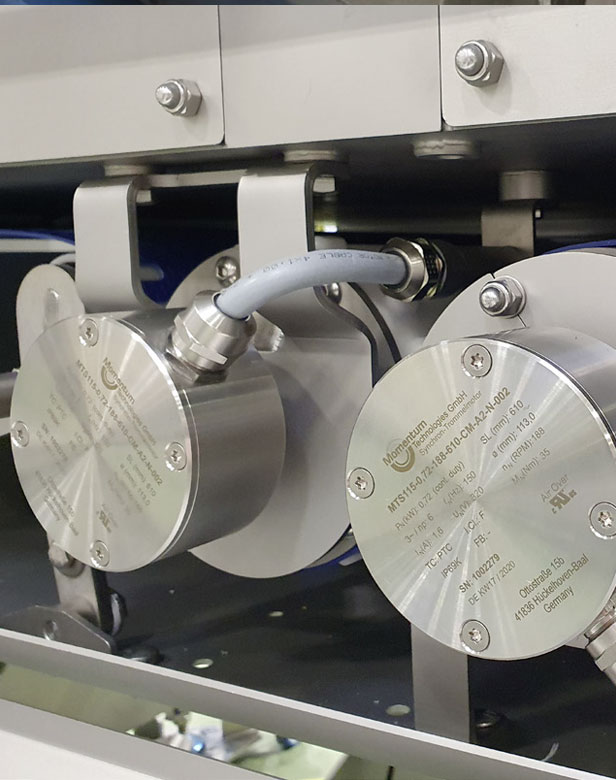
The Solution - What is it that makes one drum motor "cooler" than the other?
Drum motors are ultimately always cooler when their operating temperature is lower compared to others. NGI is aiming to set standards in this area with its synchronous drum motors. The company explains that at full power, the motors only reach a surface temperature of around 45 degrees Celsius at an ambient temperature of 20 degrees Celsius, whereas conventional synchronous drum motors can get much hotter. However, they are also cooler despite their oil-free operation, which is not automatically the case with other drum motors. This is mainly because oil is often used to cool the motor. The problem with this is that even in a hermetically sealed drum motor, oil is a critical control point in an HACCP concept that should ideally be avoided in a hygienic design. But how can the operating temperature of synchronous drum motors be reduced while simultaneously avoiding oil for cooling?
Saving energy without oil
The design principle of synchronous motors, which is more energy-efficient than that of asynchronous motors, can be attributed to this. The specific design of the NGI motors also has an effect. Overall, this is a perfect combination for Marel, as it allows users to achieve maximum productivity while at the same time reducing energy consumption in food processing. Powerful arguments, then, for Andri Sveinsson, which clearly speak in favour of the NGI drum motors.
They are even more impressive when their sturdy construction is taken into consideration. Featuring a standardised and solid 30 mm axle, for example, they are inherently more stable than designs with 17 or 22 mm axles. As a result, users not only benefit from reduced maintenance costs, but also from a sustainable design – a major factor that is becoming increasingly important in management decisions. A secondary advantage of the standardised stronger axle is a less complex product range, as the same axle can be used for all configurations. For Andri Sveinsson, the assembly conditions are always identical – irrespective of which specific motor configuration is used.

The Effect - Key to innovations
By switching to synchronous drum motors, Andri Sveinsson is intending to significantly reduce the number of variants in the plant. In future, the portfolio he manages will only be a third as large, which will also reduce storage and replacement costs. The streamlined maintenance also limits both the amount of work involved in servicing and the training required. These are all in all many positive arguments and also many interesting new possibilities for OEMs. Although there are many arguments in favour of the new class of synchronous drum motors, there are some technical challenges to overcome in order to replace asynchronous motors in new conveyor systems controlled by smart logic, and not only at Marel. Existing designs have to be converted to the new 30 mm axle diameter. In this case, OEMs are waiting for the introduction of the next system generation before making any changes.
A further challenge relates to the design-in of the motor, as the setup of the frequency inverter has to be adapted. This is something that even Marel's experts struggled with, but NGI was able to immediately address any questions that arose because its engineers work closely with frequency inverter suppliers. "The service provided by NGI is indeed outstanding and right on the mark," Andri Sveinsson explains. NGI's participation in Marel's standardisation project sounds like it has succeeded in creating a strong and solid foundation for the expansion of the drum motor business.

















